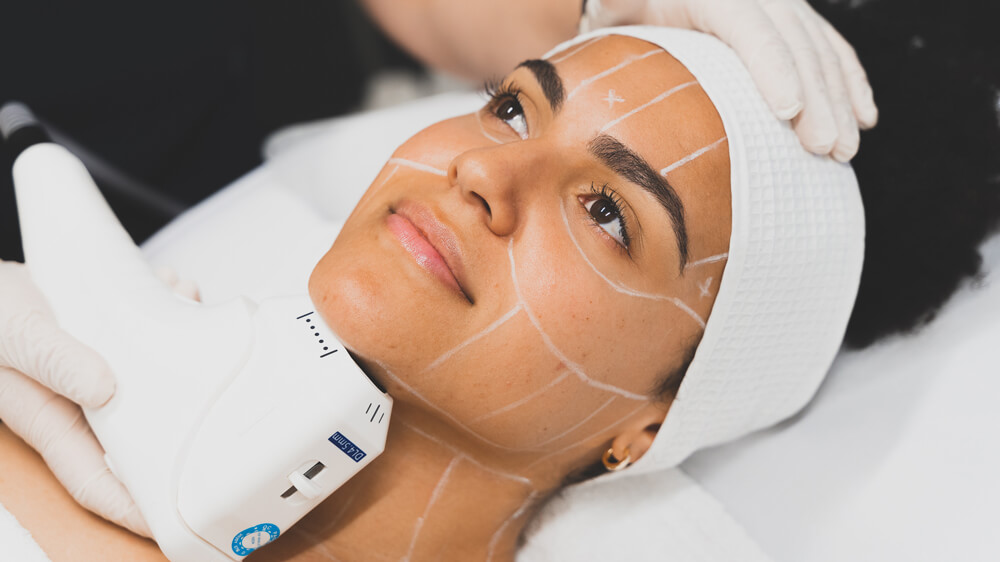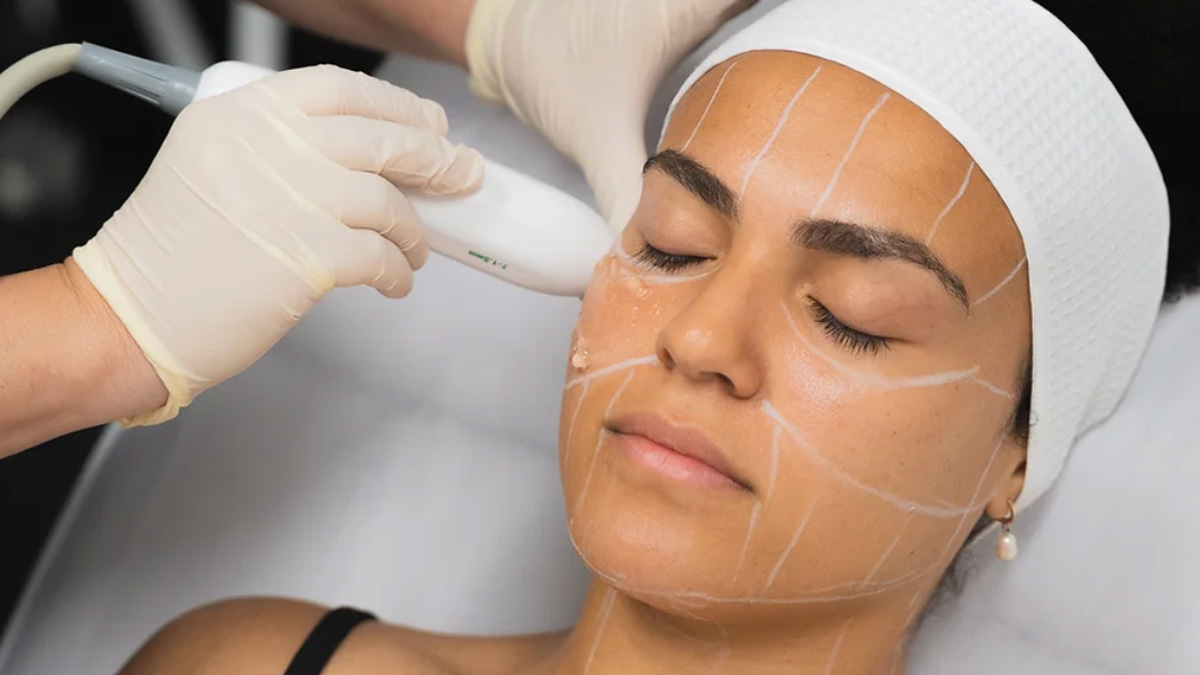The quest for eternal youth is as old as time. From Cleopatra’s milk baths to modern-day skincare routines, people have been searching for ways to keep their skin looking youthful and radiant. One of the most popular methods for achieving a more youthful appearance is through facelift procedures.
By the end of this article, you’ll have a better understanding of the differences between traditional facelifts and HIFU and be equipped to make an informed decision about which procedure is best for you. So sit back, relax, and get ready to learn everything you need to know about facelift procedures. Let’s dive into the nitty-gritty of these procedures, shall we?
What is a traditional facelift?
A traditional facelift, also known as a rhytidectomy, is a surgical procedure that involves lifting and tightening the skin and muscles of the face and neck. The goal is to create a more youthful appearance by removing excess skin, tightening underlying tissues, and repositioning fat.
How traditional facelift works?
During a traditional facelift, the surgeon makes incisions in the hairline, behind the ears, and sometimes under the chin. They then lift and reposition the skin, muscle, and fat tissues as needed before trimming away any excess skin. The incisions are then closed with sutures or staples.
Pros and cons of a traditional facelift
On the plus side, a traditional facelift provides long-lasting results and can address a variety of concerns, including sagging skin, deep wrinkles, and jowls. However, the procedure is invasive and requires anesthesia, which can increase the risk of complications. Recovery time can also be lengthy, with some patients requiring several weeks off work or other activities.
What is HIFU?
HIFU stands for high-intensity focused ultrasound. It’s a non-invasive procedure that uses ultrasound energy to tighten and lift the skin. HIFU can be used on various areas of the face and neck to address sagging skin, wrinkles, and fine lines.
How HIFU works?
During a HIFU treatment, a handheld device is used to deliver focused ultrasound energy deep into the skin’s layers. This energy heats up the tissues, stimulating the production of collagen, which helps to lift and tighten the skin.
Pros and cons of HIFU
One of the biggest advantages of HIFU is that it’s non-invasive and requires no downtime. It’s also a good option for people who want to avoid surgery or who aren’t good candidates for a traditional facelift. However, HIFU may not provide as dramatic or long-lasting results as a traditional facelift, and multiple treatments may be necessary to achieve the desired outcome.
So there you have it – a breakdown of the differences between a traditional facelift and HIFU.
Now that you know the basics of each procedure, it’s time to decide which one is better for you. Are you willing to go under the knife for longer-lasting results, or would you prefer a non-invasive approach that requires no downtime?
It all comes down to your individual needs and preferences.

Factors to consider when choosing between HIFU and a traditional facelift
A traditional facelift, the procedure involves incisions, anesthesia, and a longer recovery time and while a traditional facelift typically provides more immediate and longer-lasting results.
HIFU, on the other hand, is non-invasive and requires no downtime However, HIFU may require multiple treatments to achieve the desired results.
Questions to ask yourself:
First and foremost you need to consider your personal preferences.
- Do you want a quick fix?
- Are you willing to undergo a more invasive procedure for longer-lasting results?
- Do you have any underlying health conditions that might make surgery a riskier option?
- You’ll also want to consider your skin type and the specific concerns you’re hoping to address.
- Are you primarily concerned with sagging skin or wrinkles?
- Do you have a lot of excess skin that needs to be removed? or are you just looking for a subtle lift?
So, when might you choose one procedure over the other? If you have a lot of excess skin that needs to be removed, a traditional facelift might be the better option. On the other hand, if you’re looking for a subtle lift and want to avoid surgery, HIFU might be the way to go.
Ultimately, the decision comes down to your individual needs and preferences. The best way to make an informed decision is to consult with a qualified professional who can evaluate your skin type, concerns, and goals and recommend the best course of action for you.
Does HIFU really work?
You might be thinking, “HIFU sounds too good to be true.” Well, there’s clinical evidence that suggests it’s not. In fact, there have been several studies comparing the two procedures. One study published in the Journal of Cosmetic and Laser Therapy in 2019 found that HIFU was less effective than a traditional facelift when it came to treating sagging jowls.However, another study published in the Journal of Clinical and Aesthetic Dermatology in 2020 found that HIFU was a safe and effective alternative to a traditional facelift for improving skin laxity and reducing wrinkles.
Ah, clinical evidence. It’s the stuff that separates the snake oil from the real deal. So, what does the research say about HIFU and traditional facelifts?
It seems that both procedures have their strengths and weaknesses. A traditional facelift is more invasive, but it provides longer-lasting results. On the other hand, HIFU is non-invasive, requires no downtime, but may require more treatments to achieve the desired results.
Remember, no two faces are the same, and there’s no one-size-fits-all solution. But with the right information and guidance, you can make an informed decision that will help you look and feel your best.
Consultation and choosing a procedure
Before making a decision about a facelift procedure, it’s essential to schedule a HIFU consultation with a qualified professional. A plastic surgeon or dermatologist can evaluate your skin, discuss your goals, and recommend the best course of action. They can also help manage your expectations and ensure that you have a safe and successful procedure.
During your consultation, it’s essential to ask plenty of questions. Some things to consider include:
- What are the risks and benefits of the procedure?
- What kind of results can I expect?
- What is the recovery process like?
- How long will the results last?
- Are there any non-surgical alternatives that might be a better fit for me?
- What kind of experience do you have with this procedure?
When deciding between a traditional facelift and HIFU, there are several factors to consider, including:
- Your age and skin type
- The severity of your wrinkles and sagging skin
- Your budget
- Your tolerance for downtime and recovery
- Your overall health and medical history
Remember, there’s no shame in wanting to look your best. With the right information and support, you can make a decision that’s right for you and enjoy the confidence that comes with a more youthful appearance.
To recap, we’ve learned about traditional facelifts and HIFU, examined the clinical evidence of efficacy for each procedure, and explored factors to consider when choosing between them. We’ve also emphasised the importance of consultation with a qualified skincare professional and asking plenty of questions. Facelift procedures can be a fantastic way to achieve a more youthful, radiant appearance. Whether you choose a traditional facelift or HIFU, it’s essential to do your research and consult with a qualified professional. It’s also important to manage your expectations and understand that there are risks involved with any cosmetic procedure.
If you’re considering a facelift procedure, we encourage you to consult with a qualified skincare professional at Purify Skincare Clinic in Melbourne they can evaluate your skin, discuss your goals, and recommend the best course of action. With their help, you can make an informed decision that will help you achieve the youthful, radiant appearance you desire, book today!
